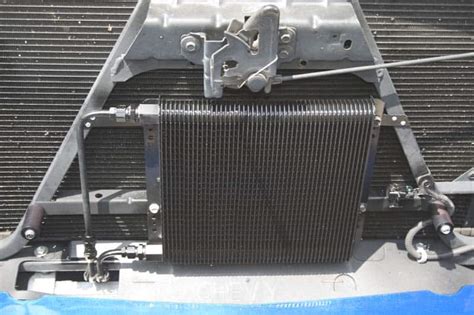Upgrade Your Ride: Install a Transmission Cooler
For many car enthusiasts, upgrading their ride isn't just about aesthetics; it's about performance and longevity. While engine modifications often take center stage, neglecting the transmission can lead to costly repairs down the road. One of the most effective upgrades you can make to protect your transmission and enhance its performance is installing a transmission cooler. This comprehensive guide will walk you through the benefits, installation process, and considerations for adding this crucial component to your vehicle.
Why Install a Transmission Cooler?
Your vehicle's transmission works hard, especially during towing, hauling heavy loads, or driving in stop-and-go traffic. The constant friction within the transmission generates significant heat. Excessive heat can lead to:
- Reduced Transmission Fluid Life: High temperatures break down transmission fluid, reducing its lubricating and cooling properties. This leads to premature wear and tear on internal components.
- Slipping or Sluggish Shifting: Heat-damaged fluid can cause the transmission to slip, shift erratically, or become sluggish.
- Transmission Failure: In extreme cases, excessive heat can cause catastrophic transmission failure, requiring costly repairs or even replacement.
A transmission cooler helps mitigate these risks by lowering the operating temperature of the transmission fluid. This extended lifespan and improved performance are invaluable for any driver.
What are the Different Types of Transmission Coolers?
There are several types of transmission coolers, each with its own advantages and disadvantages:
- Stack Plate Coolers: These are the most common type, utilizing stacked plates to increase surface area for heat dissipation. They're relatively inexpensive and efficient.
- Tube and Fin Coolers: These coolers use a network of tubes and fins to maximize heat transfer. They tend to be more durable than stack plate coolers.
- Air-to-Fluid Coolers: These coolers use air to cool the transmission fluid, often mounted in front of the radiator. They are effective but can be more susceptible to damage from road debris.
- Oil Cooler Adapters: These are designed to install inline in the transmission lines. They are easy to install and highly effective.
How to Install a Transmission Cooler: A Step-by-Step Guide
The installation process varies depending on the type of cooler and vehicle. Always consult your vehicle's repair manual and the cooler's installation instructions. However, here's a general overview:
- Gather Supplies: You'll need the transmission cooler, necessary fittings and hoses, transmission fluid, wrenches, and possibly a transmission fluid pump.
- Locate Mounting Points: Identify a suitable location for the cooler, ideally with good airflow. This is often in front of the radiator or on the frame.
- Connect Lines: Carefully connect the cooler to the transmission's fluid lines using the appropriate fittings and hoses. Ensure all connections are tight and secure to prevent leaks.
- Fill Transmission with Fluid: After installation, you'll need to add or replace the transmission fluid. Again, check your vehicle’s repair manual for the correct procedure and fluid type.
- Test Drive: After installation, take your vehicle for a test drive to ensure the cooler is working correctly and there are no leaks.
Choosing the Right Transmission Cooler
Several factors influence the selection of a transmission cooler:
- Transmission Type: The type of transmission (automatic, manual, etc.) will dictate the cooler's capacity and design.
- Vehicle Usage: If you tow frequently or drive in hot climates, you'll need a larger capacity cooler.
- Cooler Capacity: The cooler's capacity is measured in BTU (British Thermal Units) and should be appropriate for your transmission's cooling needs.
What are the Signs that my Transmission Needs a Cooler?
Several symptoms indicate your transmission might be overheating and benefit from a cooler:
- Burning Smell: A burning odor coming from the transmission area suggests overheating.
- Difficulty Shifting: Sluggish shifting or slipping gears are often signs of overheating fluid.
- Overheating Warning Light: Some vehicles have a specific warning light for transmission overheating.
Is it difficult to install a transmission cooler myself?
While installing a transmission cooler is possible for DIYers with mechanical experience, it's crucial to follow the instructions carefully. Improper installation can lead to leaks, transmission damage, or even injury. If you're not comfortable working on your vehicle, it's best to have a qualified mechanic install the cooler.
Conclusion
Installing a transmission cooler is a worthwhile investment to protect and enhance your vehicle's performance. By significantly reducing transmission fluid temperature, it extends the life of your transmission, improves shifting, and helps prevent costly repairs. With careful consideration of cooler type, capacity, and proper installation, you can give your ride the upgrade it deserves. Remember to consult your vehicle's manual and seek professional assistance if needed.

